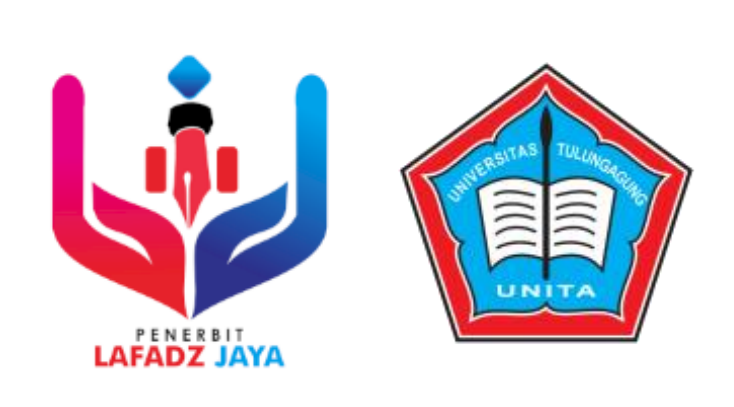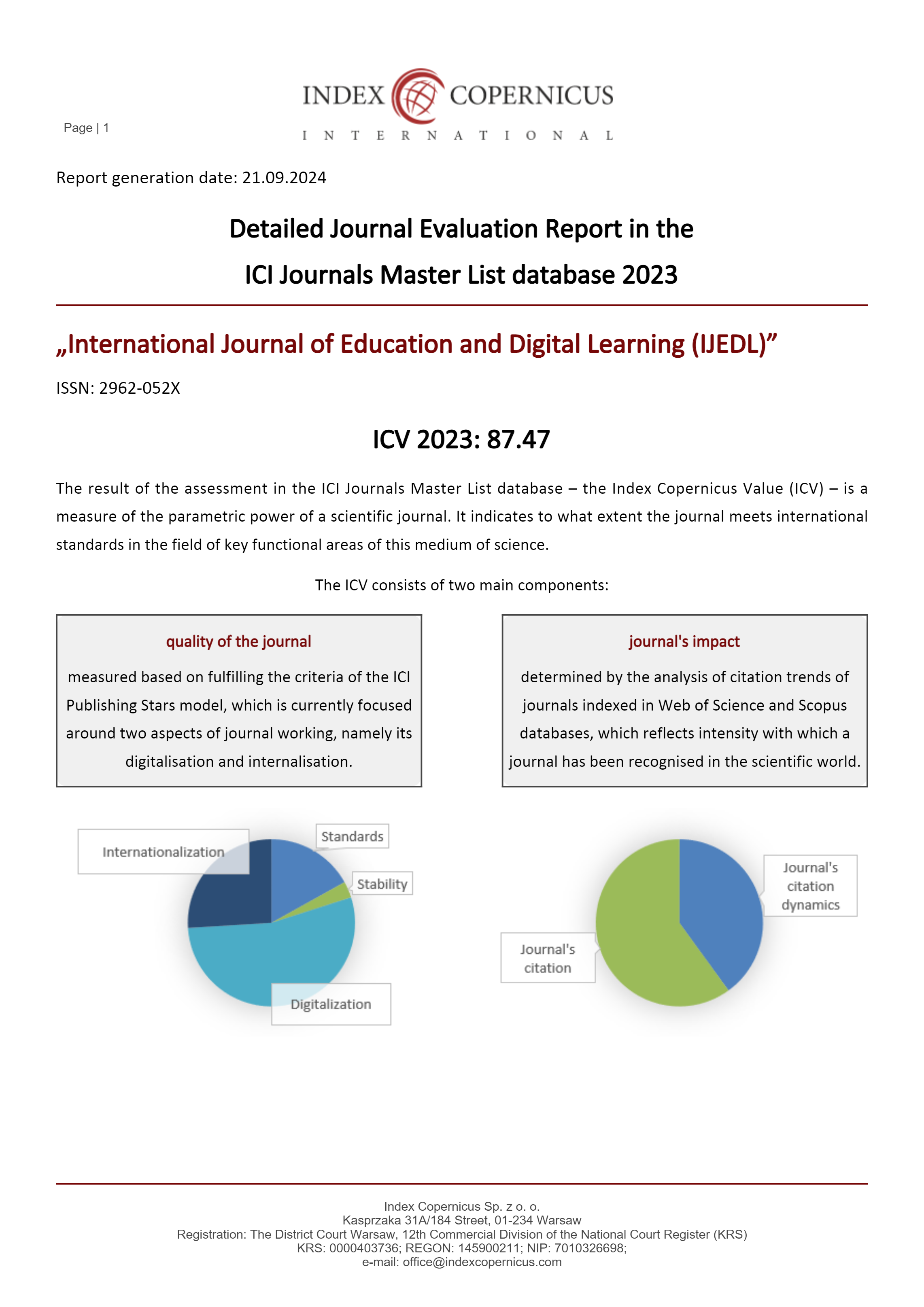The Use of Virtual Reality Technology in Learning Islamic History
DOI:
https://doi.org/10.47353/ijedl.v2i5.186Keywords:
Virtual Reality, Islamic history learning, educational technology, innovation in educationAbstract
This research explores the use of Virtual Reality (VR) technology as a tool in learning Islamic history. The main purpose of this study is to evaluate the effectiveness of VR in increasing students' understanding and engagement with Islamic history materials. The research method used is a case study with a qualitative approach, involving observation and documentation. The results show that the use of VR significantly increases students' interest and makes it easier to understand complex historical concepts. Students report that VR experiences allow them to experience firsthand historical context, making them more engaging and memorable. However, the study also identified some challenges, such as technological limitations and the need for specialized training for teachers. These findings demonstrate the potential of VR as an innovation in Islamic history education and offer recommendations for wider implementation
Downloads
References
Abu, A. N. (2024). Penghayatan Sirah Nabi Muhammad Saw Melalui Penggunaan Virtual Reality (VR). E-Prosiding Persidangan Antarabangsa Sains Sosial & Kemanusiaan kali ke-9.
Creswell, J. W. (2009). Research Designe Qualtative, Quantitative, and Mixed Methode Approaches. Sage.
Dayu, R., Mirdad, J., & Fitri, N. (2022). Pengembangan Multimedia Google Earth Berbasis Virtual Mata Pelajaran SkI di Madrasah Tsanawiyah (MTs). Ideas: Jurnal Pendidikan, Sosial, dan Budaya, 8(3), 1179. https://doi.org/10.32884/ideas.v8i3.902
Fauzian, R. (2022). Metaverse dan Pembelajaran Sejarah Kebudayaan Islam di Madrasah; Tantangan dan Peluang. Madaris: Jurnal Guru Inovatif, Edisi Khusus ISOE (International Symposium On Education)(1), 27–37.
Fayiz, M., Hilmy, N., Darusalam, U., & Rubhasy, A. (2020). Augmented Reality sebagai Media Edukasi Sejarah Bangunan Peninggalan Kesultanan Utsmaniyah menggunakan Metode Marker Based Tracking dan Algoritma Fast Corner Detection. Jurnal JTIK (Jurnal Teknologi Informasi dan Komunikasi), 4(2), 138. https://doi.org/10.35870/jtik.v4i2.162
Kim, D., Coenraad, M., & Park, H. R. (2021). Digital storytelling as a tool for reflection in virtual reality projects. Journal of Curriculum Studies Research, 3(1), 101–121. https://doi.org/10.46303/jcsr.2021.9
Kusumaningsih, A., Angkoso, C. V., & Anggraeny, N. (2018). Virtual Reality Museum Sunan Drajat Lamongan Berbasis Rulebased System untuk Pembelajaran Sejarah. Jurnal Teknologi Informasi dan Ilmu Komputer, 5(4), 473. https://doi.org/10.25126/jtiik.201854818
Lakka, I., Zafeiropoulos, V., & Leisos, A. (2023). Online Virtual Reality-Based vs. Face-to-Face Physics Laboratory: A Case Study in Distance Learning Science Curriculum. Education Sciences, 13(11), 1083. https://doi.org/10.3390/educsci13111083
Lie, S. S., Helle, N., Sletteland, N. V., Vikman, M. D., & Bonsaksen, T. (2023). Implementation of Virtual Reality in Health Professions Education: Scoping Review. JMIR Medical Education, 9, 1–15. https://doi.org/10.2196/41589
Noble, S. M., Saville, J. D., & Foster, L. L. (2022). VR as a choice: What drives learners’ technology acceptance? International Journal of Educational Technology in Higher Education, 19(1), 6. https://doi.org/10.1186/s41239-021-00310-w
Pathan, R., Rajendran, R., & Murthy, S. (2020). Mechanism to capture learner’s interaction in VR-based learning environment: Design and application. Smart Learning Environments, 7(1), 35. https://doi.org/10.1186/s40561-020-00143-6
Rohmah, A. N. B., Romadhona, E. P., Putri, L. A., & Kartikasari, V. (2022). Pembelajaran Pendidikan Islam Melalui Virtual Reality (VR). 7(2), 373–385.
Ruzakki, H., Nashrullah, N., Junaedi, D., Khoiriyah, S., & Asror, M. (2024). Trend Pemanfaatan Teknologi Augmented Reality Dan Virtual Reality Dalam Pembelajaran Pendidikan Agama Islam Di Indonesia. Edukasi Islami: Jurnal Pendidikan Islam, 13(01). https://doi.org/10.30868/ei.v13i01.4888
Saputri, F. H., & Putra, G. A. I. A. (2023). Pengembangan Media Pembelajaran Sejarah Indonesia Berbasis Game Edukasi Untuk Siswa Kelas 7 Madrasah Tsanawiyah Al-Hafizh Rajeg. G-Tech: Jurnal Teknologi Terapan, 8(1), 16–25. https://doi.org/10.33379/gtech.v8i1.3448
Silakova, L. V., & Sosnilo, A. I. (2023). Study of the Educational Process Participants Readiness to Applying Digital Technologies in Education. Psychological Science and Education, 28(4), 112–133. https://doi.org/10.17759/pse.2023280407
Sugiono. (2015). Metode Penelitian Kualitatif. Alfabeta.
Suryonegoro, B. M., Wuryastuti, M. L., & Dewi, N. R. (2024). Literature Review: Inquiry Social Complexity-STEAM Model Based on Math Trail-Virtual Reality Activity Nuanced with Javanese Culture in Improving Critical Thinking Ability. Journal Evaluation in Education (JEE), 5(2), 89–100. https://doi.org/10.37251/jee.v5i2.863
Tønnessen, T. H. (2024). Islamic State and Technology – A Literature Review. Perspectives on Terrorism, 11(6), 101–111.
Utari, S. D., Agustin, M. L., Dzikri, A. M., & Ayundasari, L. (2021). Perancangan Aplikasi Virtual Reality Cagar Budaya untuk Pembelajaran Sejarah Lokal. Historia: Jurnal Pendidik dan Peneliti Sejarah, 4(2), 103–114. https://doi.org/10.17509/historia.v4i2.25740
Downloads
Published
How to Cite
Issue
Section
License
Copyright (c) 2024 Iis Suryantini, Asep Nursobah, Mamang Subagja, Imas Masripah, Rivan Widiana

This work is licensed under a Creative Commons Attribution 4.0 International License.













